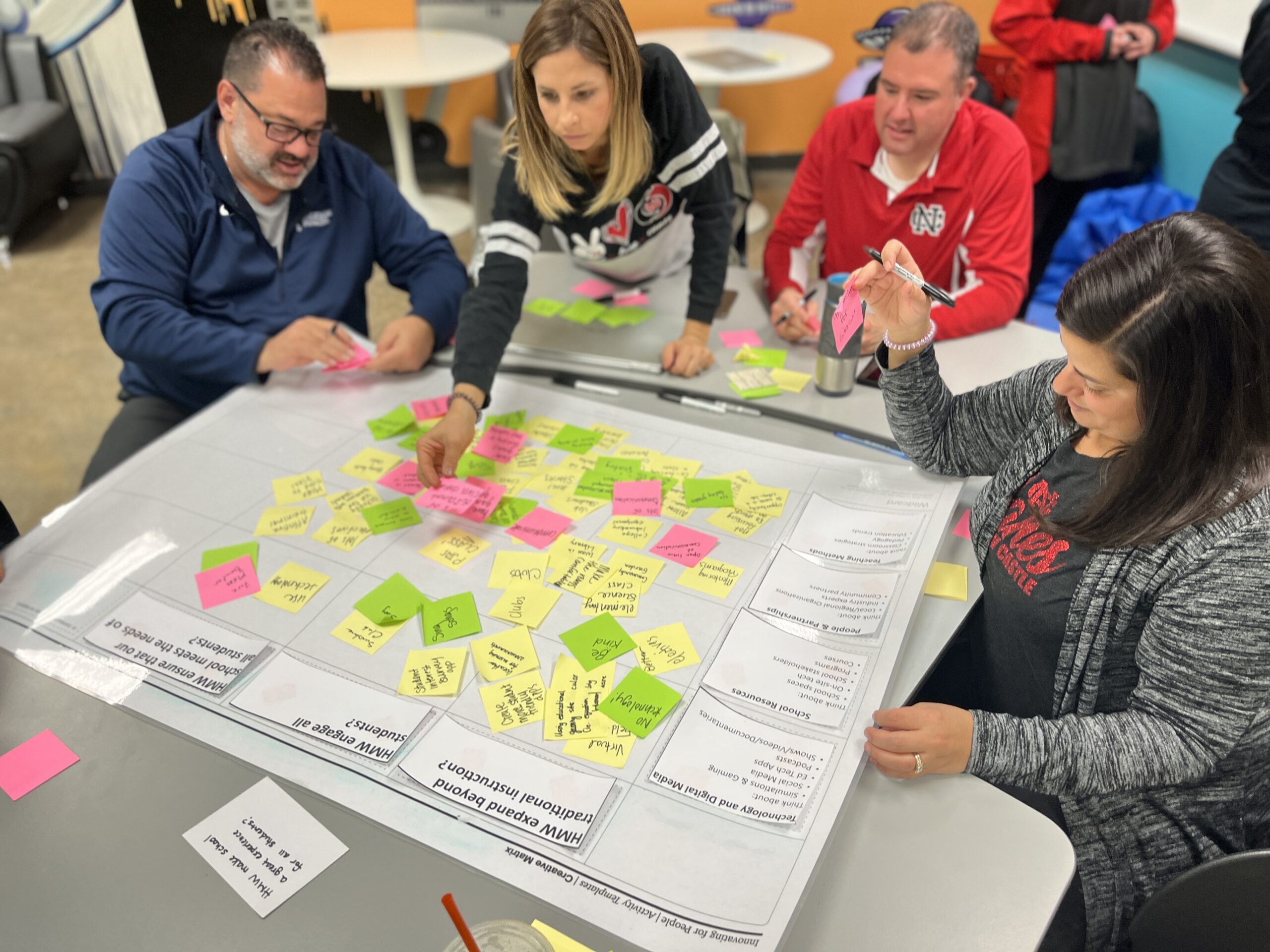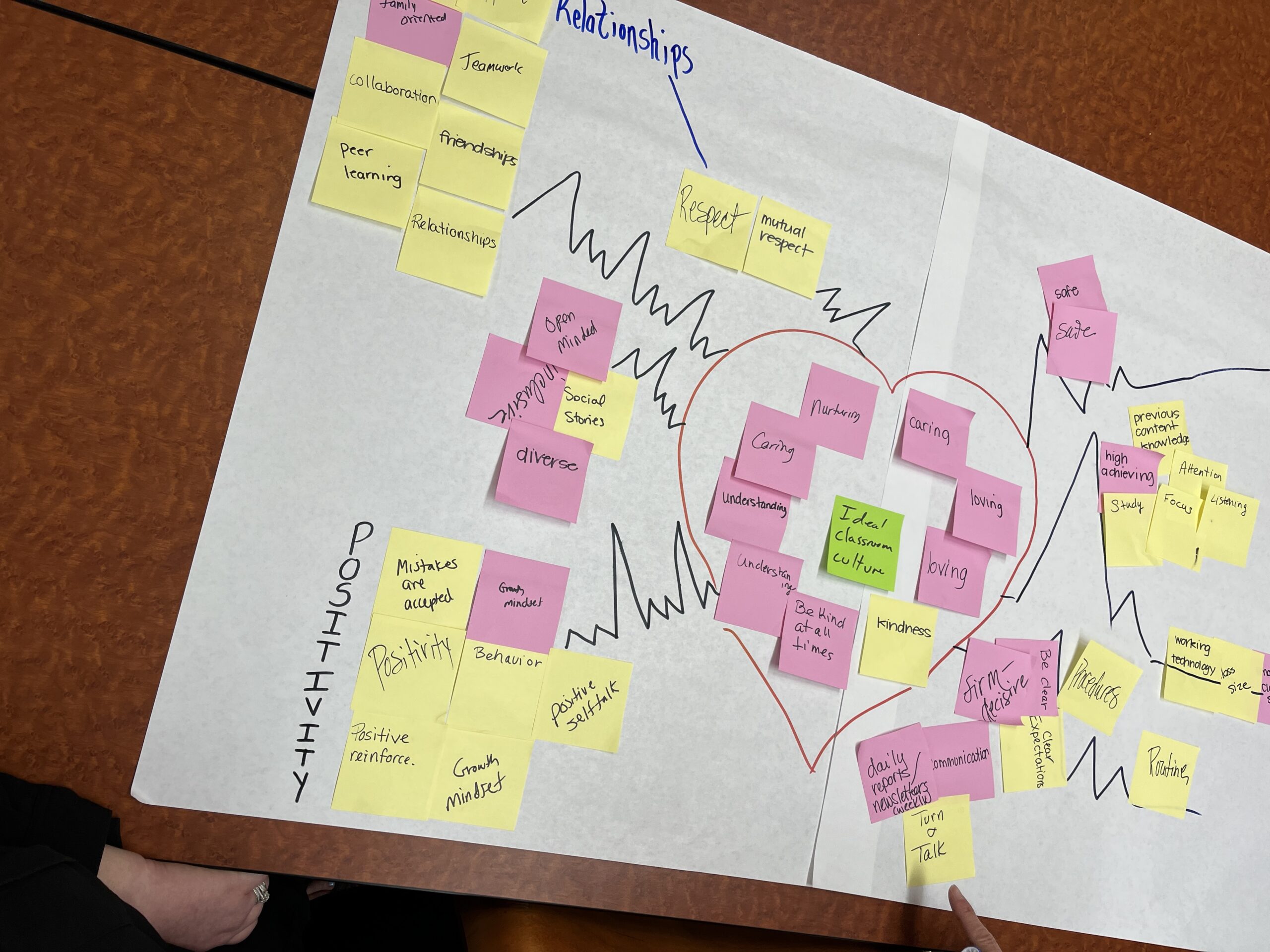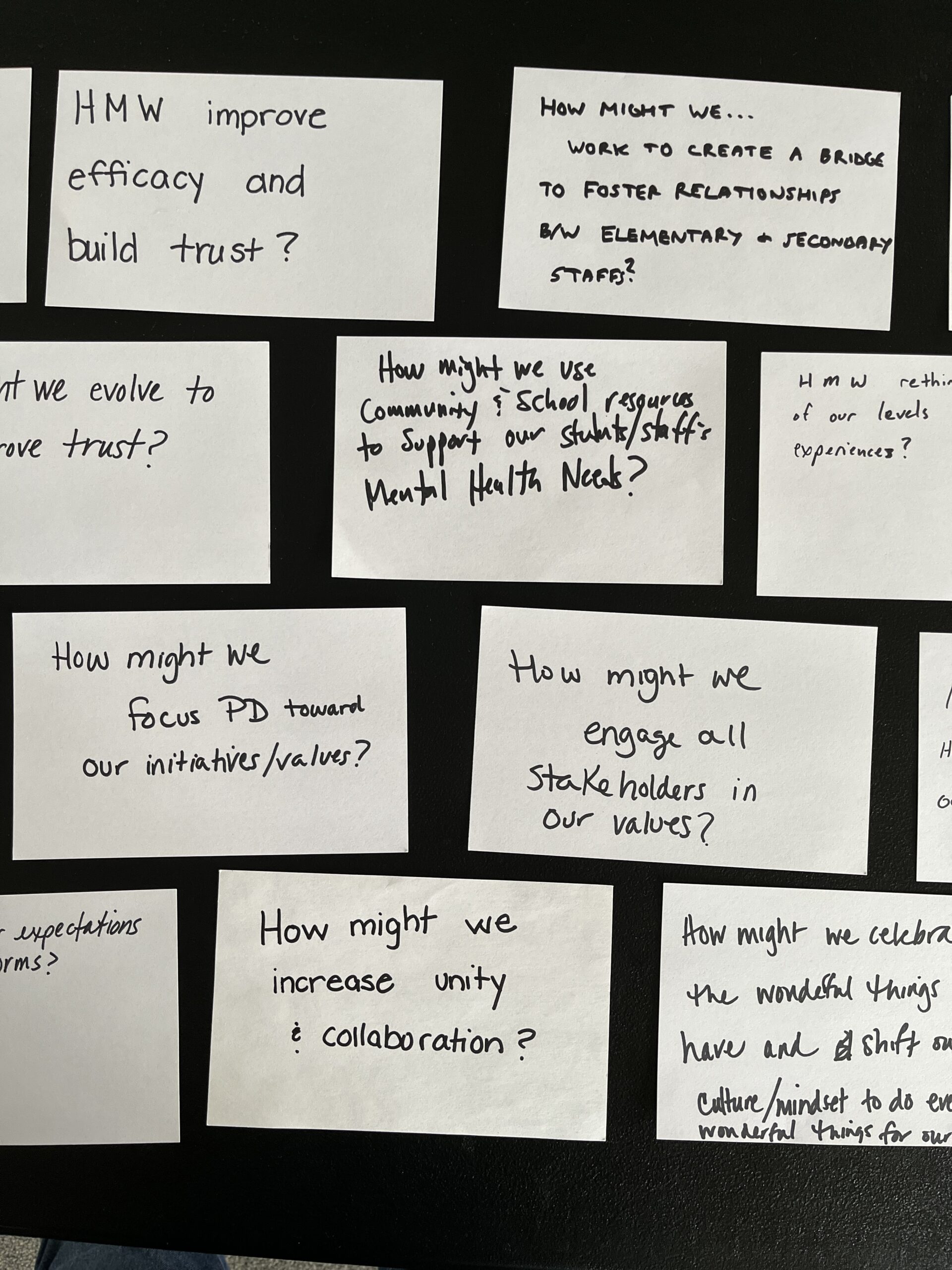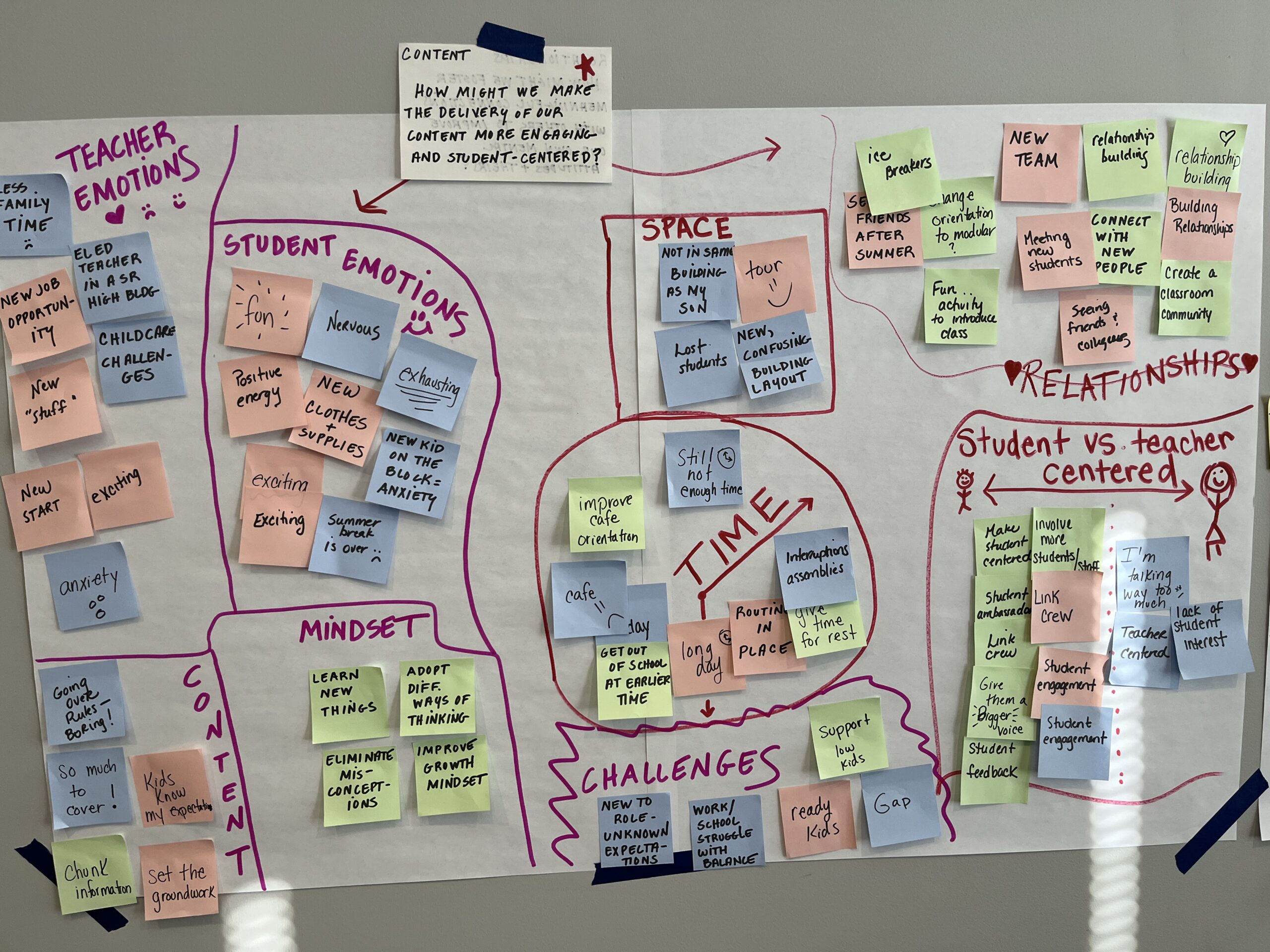The Consortium offers educators multiple ways of learning about Human-Centered Design (HCD) and bringing this powerful approach to problem-solving into their schools, classrooms and communities.
HCD is a subset of design thinking that focuses on empathy as a means for problem-solving—know your students well and instruction will better meet their needs. Understand the challenges facing your community and you can adapt to its priorities.
An impactful and engaging education system puts people first–students, parents, teachers, community members–and human-centered design provides the toolbox to ensure your system stays agile and responsive to your stakeholders now and into the future.
We believe that HCD is an invaluable tool for educators at every level, and we have devoted a team to bringing HCD to as many schools as possible. Our HCD trainers have supported educators from dozens of school districts, providing a background in design thinking, as well as teaching the mechanics of methods for empathy, clear problem-definition, ideation, prototyping, and testing of solutions.
Additionally, to support educators who have participated in one of our trainings, or want to have a better sense of our approach, we have created a library of Design-Thinking for Educators explainer videos to serve as a resource.
Services
Over the course of two full days, participants take an interactive dive into a collection of design methods tailored to support innovation and problem-solving in their school systems. Educators learn about and practice using methods in a collaborative, authentic environment. This training includes access to our virtual Canvas course housing additional resources, videos, and editable templates. Complete with ongoing support as teams implement their own design projects back in their home districts.
Using Human-Centered Design to Support Student Growth and Achievement is a 50-hour Act 45 course that introduces school leaders to design thinking and, more specifically, Human-Centered Design. Through in-person, asynchronous (online), and job-embedded components, participants will learn about and apply each phase of the design cycle to a challenge within their school system that will foster student growth and achievement. Learn more on our Act 45 page.
Offered as either a one or two-hour interactive presentation, this introduction to HCD includes an overview of the design process, key tools and strategies of effective design, examples of school implementation, and even a little practice. Though packed with design content, participants also have an opportunity to try a variety of HCD methods used at different stages of problem-solving.
Trainers facilitate specific design workshops or sessions tailored to help your team tackle a specific topic or challenge. Past sessions have included:
- Virtual One-Day Intro HCD Training
- Designing a District Portrait of a Graduate
- Targeted by Grade Level/Audience:
- Design thinking for the STEELS Standards
- Design thinking in the secondary classroom
- Design thinking in the elementary classroom
Frequently Asked Questions
Absolutely! Design methods can support a variety of classroom activities, no matter the content. Whenever students have the opportunity to observe, problem-solve, get/give feedback, or express their creativity, there is a design method that can help. HCD also provides the structure for modeling and building key soft skills such as communication and collaboration.
HCD strategies can be used during multiple parts of a problem-solving, development, or implementation process to generate innovative ideas, build consensus, and encourage equal input across stakeholders with different perspectives. Other than strict information sharing, if you are looking at a situation that could be strengthened with greater input, there’s an HCD method that can help.
The Consortium is committed to an equitable and inclusive fee structure to maximize the opportunities for districts of all demographics to participate. Districts may qualify for up to a 40% discount on all training costs.










